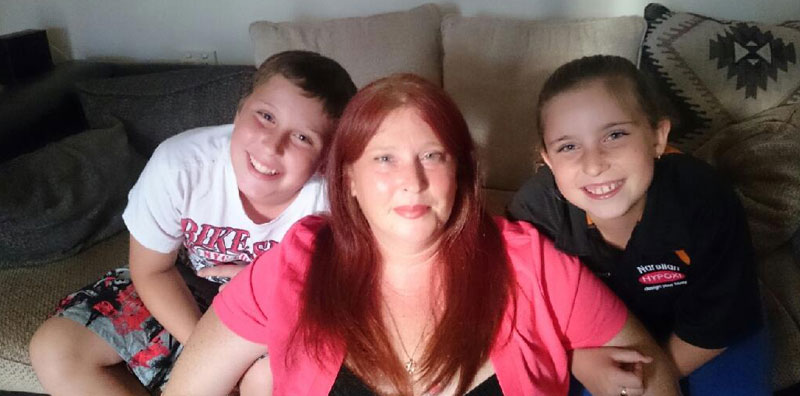Natasha's Story
“Daddy, Mia is sleeping in the pool”
Natasha Hadley is still haunted by the day her daughter Mia nearly drowned in 30 centimetres of water. The children’s father, Glen was sitting by the portable pool while his two kids were playing. Glen was momentarily distracted on the phone when Patrick (who was four at the time) came up to him and said “Daddy, Mia is sleeping in the pool.”
Having retrieved his lifeless daughter from the pool, Glen screamed hysterically “Call an ambulance!”

“She was lifeless and blue. I had a first aid certificate but couldn’t even give the ambulance my address I was so shaken. At that immediate moment, I just kept screaming ‘She’s got to breathe’ ” Natasha said.
Glen was able to revive Mia after four minutes of CPR, before the ambulance arrived and stabilised her. Natasha, still in shock was trying to come to terms with what happened “I just kept saying to the ambulance driver – I can’t understand how a 2 and a half year old can drown in a foot of water.”
Children drown in portable pools every year in Australia. Many more are hospitalised as a result of a drowning incident in a portable pool. Male children under five years of age are most at risk. Drowning happens quickly, especially in young children as it’s a silent event. Children don’t splash or call out for help. “To parents that are supervising their kids, don’t take your mobile outside, spend that time 100% focused on your kids. It only takes a second, a split second where you can lose something so precious,” Natasha said.
Young children are particularly vulnerable to drowning as they are attracted to water and their top heavy build means they can topple into water easily. They lack the knowledge to recognise risk and the skills and coordination to get themselves out of trouble, making even the shallowest of water a potentially life threatening situation. “Just because your two year old is walking and talking and able to drink out of a cup doesn’t mean they know how to get themselves out of that situation,” Natasha says.
Natasha told her story in 2014 / 15 when Royal Life Saving, in partnership with Commonwealth, State and Territory consumer affairs agencies launched the original “Make it Safe” campaign. It promoted five simple safety steps to parents and carers thinking about buying or using a portable pool:
- Check with your local council regarding fencing requirements.
- Ensure you always actively supervise children within arms’ reach whenever they are in, or around the water.
- Never rely on older children to supervise younger children, no matter how confident you are about their ability to supervise the younger child.
- For smaller pools – ensure you empty them and put them away when you are finished with them.
- Always store portable pools safely away from young children. Ensure the pool cannot fill with rain water or water from sprinklers.
If you cannot 'Make it Safe' there are many alternatives to portable pools families can use. “Go to the shops and spend 7 dollars on a big sheet of plastic, peg it into the ground, add some washing detergent and a sprinkler and the kids can use it as a slide,” Natasha said.